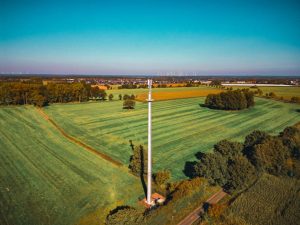Understanding Flow Control: Key Concepts and Mechanisms for High-Performance Networks

Flow control is a cornerstone of modern high-performance networking, ensuring stability and efficiency in data transmission across complex systems. As networks grow increasingly intricate, understanding the mechanics of flow control becomes critical for delivering consistent performance. This article explores foundational concepts of flow control, diving into its principles, paradigms, and design trade-offs to help readers grasp the intricacies of managing data transfer.
What is Flow Control and Why Does It Matter?

Pexels
Flow control serves as a feedback mechanism within network communications, addressing two vital questions: how much data should be sent and how fast it should be transmitted. Without effective flow control, networks risk congestion, packet loss, and inefficiencies that can degrade overall performance. This dynamic system relies on round-trip time (RTT)—the delay between sending data and receiving feedback about its impact—to regulate data transmission. However, the essence of flow control lies in managing the blind mode of transmission, a period when the network sends data without knowing current conditions. This makes the design of flow control mechanisms crucial for maintaining stability and preventing resource bottlenecks.
Lossy vs. Lossless Flow Control Paradigms

Pexels
Flow control systems are categorized into two primary paradigms: lossy and lossless. Lossy systems, often inherited from communication engineering practices, allow buffer overflows and dropped packets. While simple in theory, they introduce complexity due to retransmissions, which waste bandwidth and reduce efficiency. Designing protocols to manage these losses is essential to maintain a balance between goodput (useful data delivered) and total throughput.
Lossless flow control, on the other hand, guarantees no data loss by preventing buffer overflow. Originating from hardware engineering, this paradigm ensures efficient use of resources and minimizes delays. However, lossless systems bring their own challenges, such as avoiding head-of-line blocking and breaking potential deadlocks. Understanding the trade-offs between these paradigms is essential for configuring network systems according to specific performance requirements.
Open-Loop, Closed-Loop, and Hybrid Flow Control Systems

Pexels
Flow control mechanisms can also be divided based on control strategies: open-loop, closed-loop, and hybrid systems. Open-loop systems allocate resources before data transmission begins, ensuring predictable quality. However, reserved resources that remain idle lead to inefficiencies, often limiting their application in modern, dynamic networks. Closed-loop systems dynamically adjust resource allocation based on real-time feedback, significantly reducing delays and improving flexibility through statistical multiplexing.
Hybrid systems combine the advantages of both paradigms, offering guaranteed minimum capacity while dynamically reallocating unused resources for optimal efficiency. These systems provide reliable baseline performance while maintaining adaptability for varying network traffic. Selecting the right flow control strategy is integral to achieving desired outcomes in different networking environments.
Explicit vs. Implicit Congestion Detection

Pexels
Detecting and communicating network congestion plays an essential role in flow control. Systems use either explicit or implicit feedback to detect congestion. Explicit feedback mechanisms proactively identify issues like increasing delay or rising queue lengths and signal them back to the sender. This approach mitigates congestion efficiently, often within a single RTT, and helps minimize wasted bandwidth and packet loss.
Implicit feedback, in contrast, relies on indirect congestion indicators like missing acknowledgments or timeouts. While simpler to implement, implicit methods can result in slower responses to congestion and wasted capacity. Explicit methods, although more complex, are preferred for their precision and rapid response times in high-performance networks.
End-to-End vs. Hop-by-Hop Flow Control

Pexels
Another critical decision in flow control implementation involves selecting between end-to-end and hop-by-hop systems. End-to-end flow control connects the source and destination directly, creating a simpler implementation. However, these systems are less responsive to congestion due to longer feedback loops, making lossless operation impractical.
Hop-by-hop flow control, on the other hand, operates between adjacent network nodes. With shorter feedback loops, it offers faster responses to network congestion and better data flow regulation. However, this approach increases complexity and requires advanced coordination between routing nodes. By weighing simplicity against performance, network architects can determine the optimal model for their specific needs.
Flow control remains a critical aspect of network design, balancing performance, efficiency, and complexity. By understanding its foundational principles, various mechanisms, and paradigms, professionals can optimize networks to support high-performance, scalable, and reliable data transmission.




